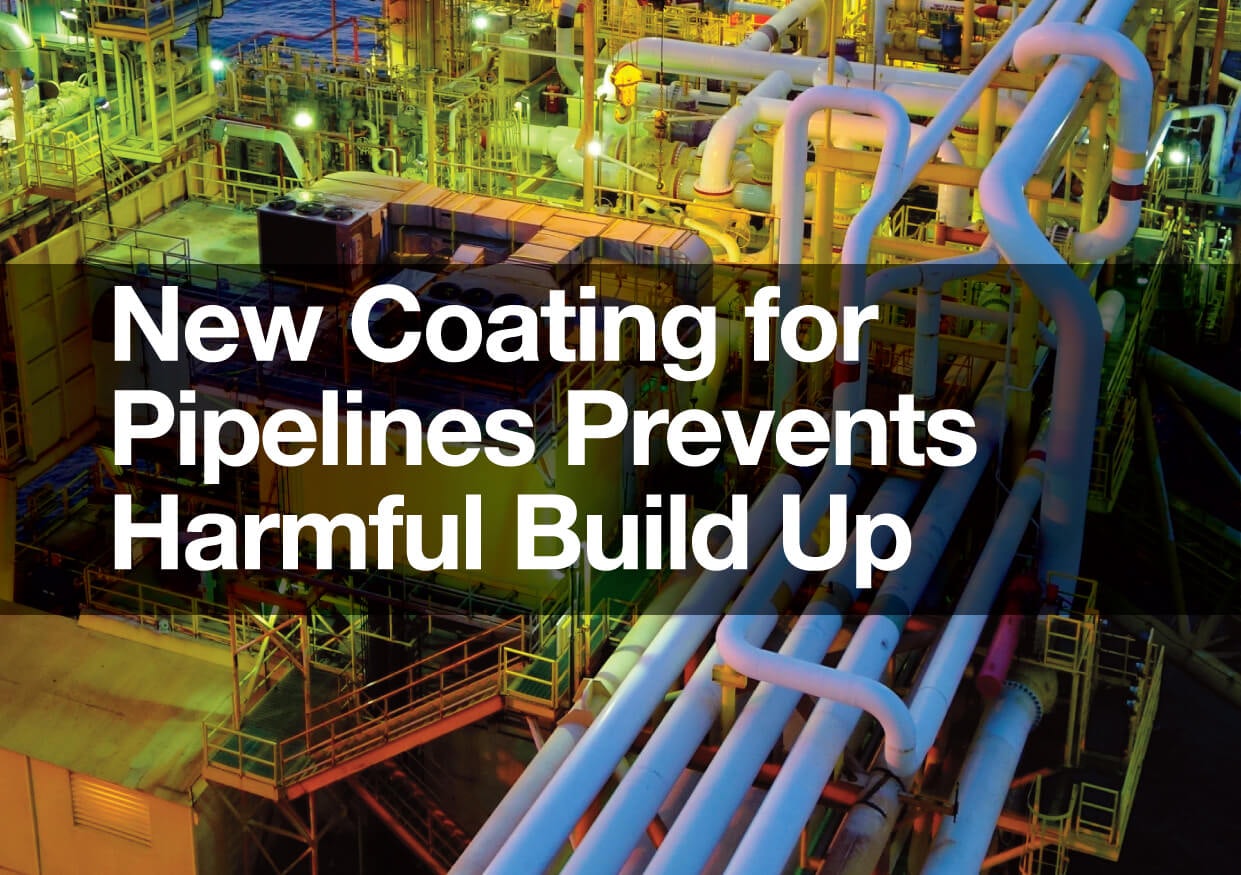New Coating for Pipelines Prevents Harmful Build Up
Dealing with harmful and at times even hazardous build-up is a common feature in industries that work with chemicals or in challenging conditions.
This is certainly the case in O&G, where pipelines continuously attract materials that wouldn’t under ideal circumstances be there, such as methane clathrate. This icy substance can cause substantial harm if it is allowed to build up inside the pipelines.
Take for example the infamous Deepwater Horizon oil spill of 2010. Whilst the accident itself was due to an explosion, the aftermath had an incident caused by the build-up of methane clathrate. When the oil started leaking out, a containment dome was placed on the broken wellhead responsible for the largest of the spills. The effort failed as the cold water and gas unexpectedly formed methane clathrate, which blocked the top of the dome, making it unable to funnel the oil into the above tanker ship. Instead, more oil continued to spill out into the water until a suitable replacement could be found.
In order to prevent similar instances from happening, a group of scientists from Massachusetts Institute of Technology is working on a solution to combat the build-up. The solution comes in the form of a coating applied to the surface of the dome – or more familiarly, underwater pipelines for oil and gas – which is able to foster the spreading of a water-barrier layer that stops water and possible ice particles from adhering to the wall. After the initial application, it doesn’t require any extra material or coating, as is the custom in existing general clear up techniques such as depressurisation and heating.
As demonstrated by the Deepwater Horizon example, there is a clear demand for the coating within the industry. Whilst the technique of using the domes was correct, the unreliability of resistance to methane clathrate caused additional damage to what had already been a catastrophe to begin with. Using the coating material would ensure similar instances don’t happen in the future.
Dashboard recognises that it is important to our stakeholders to prepare themselves for the worst-case scenario, however unlikely. The coating material that stops methane clathrate from forming along surfaces addresses an issue that has previously been left wide open and finding an answer for it is relevant to many areas of O&G.
